A cultural tour through the Region of Murcia: Cartagena, Murcia & Lorca
This website uses affiliate links which may earn a commission at no additional cost to you. As an Amazon Associate I earn from qualifying purchases.
Updated: 22nd July 2019
Erm, do we just abandon the car here then?’ I awkwardly asked as smoked billowed from the now open bonnet, alarms flashed on the dash, and a collection of confused looking onlookers made frantic suggestions in the early-evening Spanish heat. My dear friend Sarah looked ready to cry, and the clutch of our car wasn’t having a much better night either.
Luckily, an hour later, the local wine Monastrell had put a smile back on our face, and the next day, we would return to find the car back in action, ready to explore the Region of Murcia again.
My first tip for this lesser-explored part of Spain, The Region of Murcia, is to hire a car that is high off the ground, and pay serious attention to where your sat nav is taking you. For around an hour, we were stuck at the bottom of a one-way street, the bumper touching the harsh slant of the road in front, and a dedicated rescue mission of reversing ensured, all the while with friendly locals eager to shout on advice, usually while standing directly behind the car and their kids ran around behind the bonnet.
My second tip for the Region of Murcia is to go! With a new airport serving cheap flights to the UK, and an incredible mix of history, excellent value food and drink, and the air of a Spanish destination not yet overrun with tourists, it provides a very different type of trip to your average city break.
We were here on a one week Spain itinerary to produce some videos for the Murcia tourism board, which I’ll drop in above for an overview of the Region of Murcia and below, I’ll give you some tips for a one week Murcia road trip route.
While the coastline of Murcia, the Costa Cálida, will be a tempting call for beach lovers, if you head inland, you’ll discover thousands of years of history, culture and architecture, and that was exactly what we were here to explore.
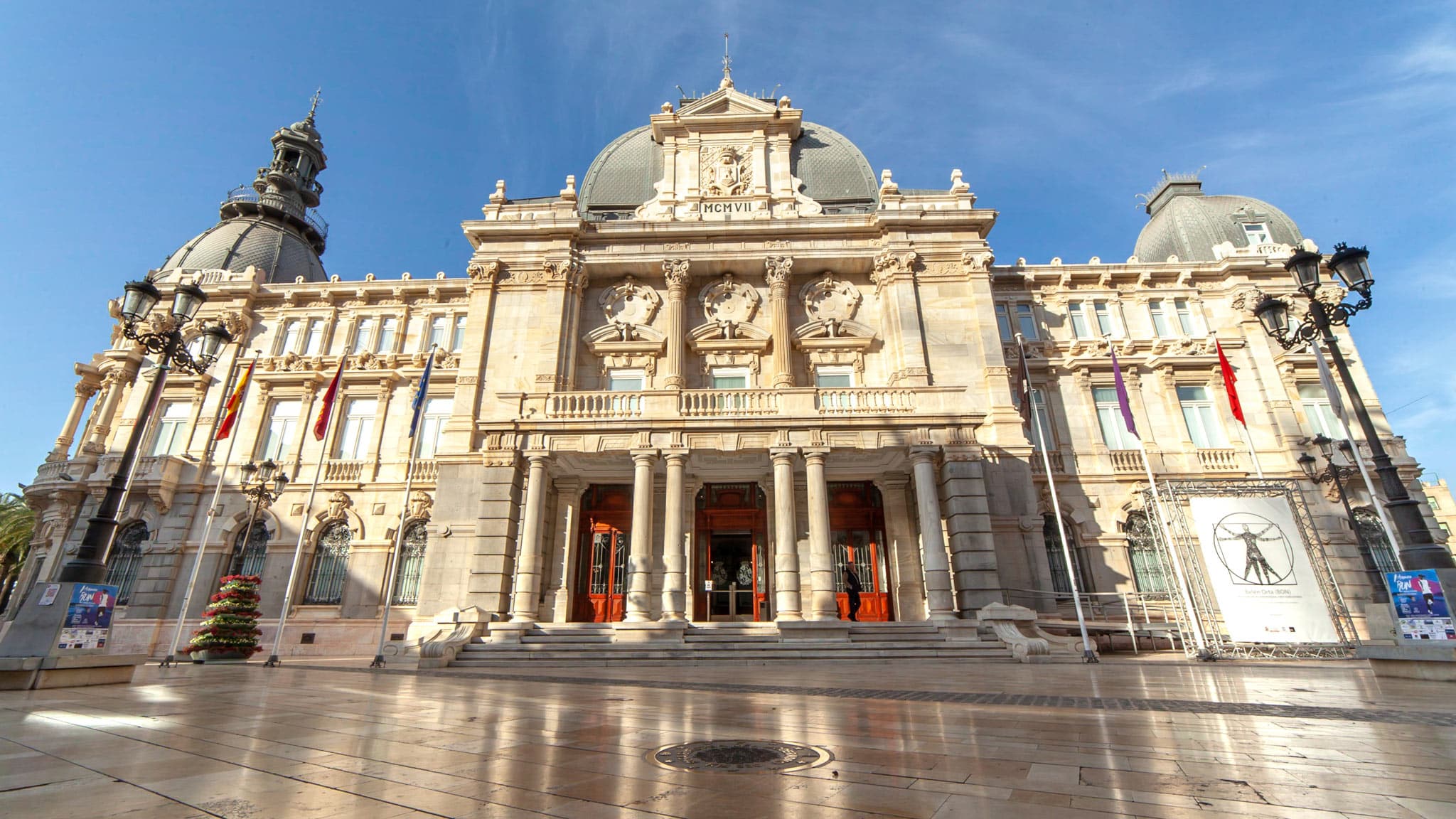
Start your journey in coastal Cartagena
The coastal city of Cartagena is awash with Roman ruins and history which are complemented by quirky bars, cool cafes and an outside tapas dining scene that, to be fair, Spain delivers throughout the country.
Two days in Cartagena, Spain, should be enough to enjoy everything it has to offer, and I suggest it as an ideal starting point for a Murcia road trip as you can enjoy the sands of the coastline for some R&R before picking up your hire car and venturing back inland.
Here are my insider tips on how to spend your time in Cartagena, Spain, from accommodation to must-visit attractions.
WHERE TO STAY IN CARTAGENA, SPAIN
I tried to pick out some awesome and unique accommodation for our Murcia road trip, and I think I came out trumps here. Take a look at that view; we were basically staying in an old Roman Amphitheatre!
These handful of central Cartagena Apartments were a great value find, and we paid about €60 per night in March for the two of us. Comfy bedding, and a small kitchen were handy, although mainly for pouring wine and coffee as with such awesome tapas available, we weren’t going to cook for ourselves.
Enjoying an evening nightcap, or morning cuppa looking out on that view though is something I’ll never forget so be sure to consider booking these apartments if you visit Cartagena in Spain. Check prices here.
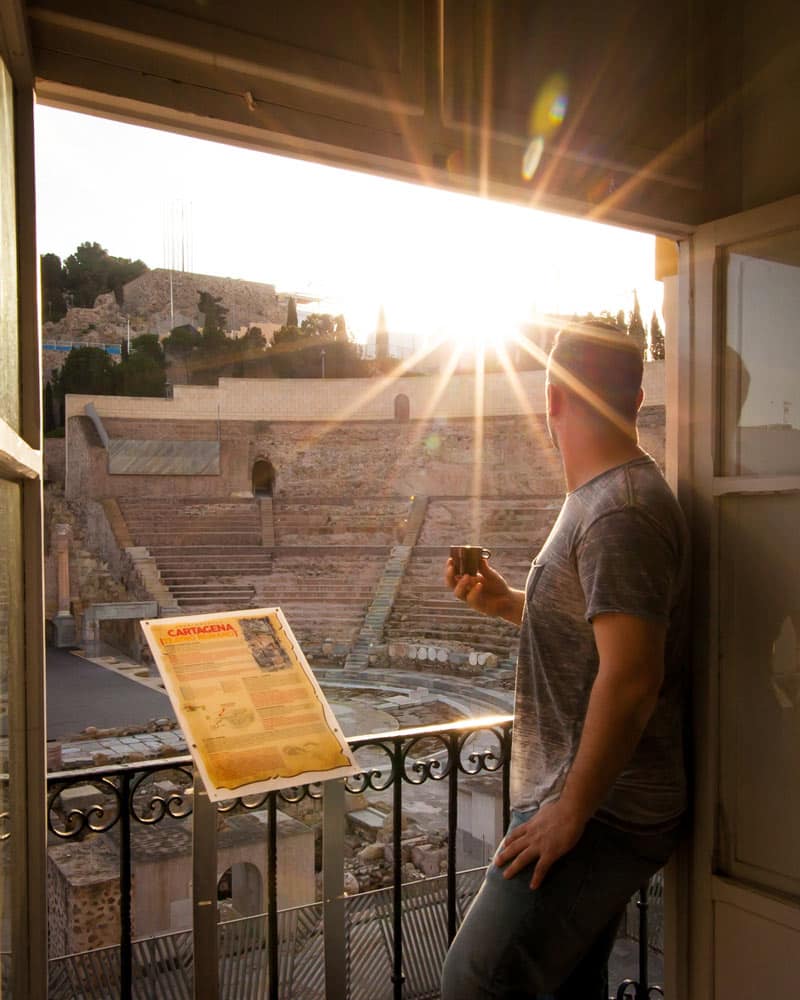
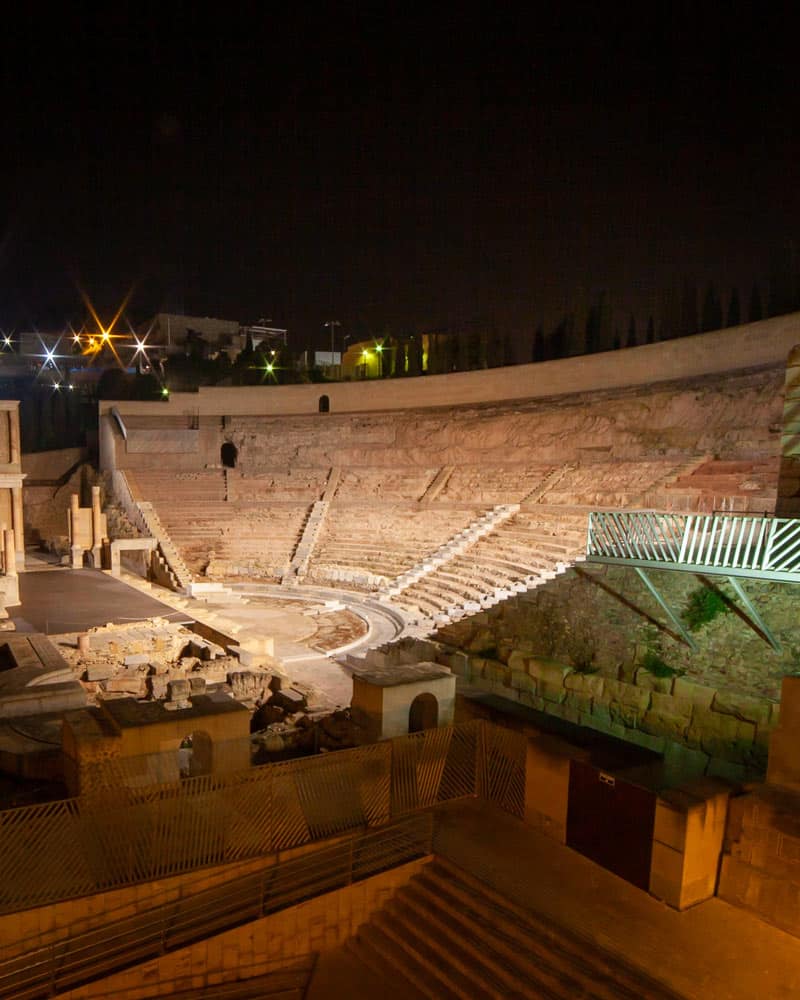
VISIT THE ROMAN THEATRE
It’s not surprising that most visitors to the Murcia Region of Spain will try to visit the Roman Theatre, and it is rightly the top cultural attraction here.
Restored after bombing damage, it’s a great spot to wander through, and the attached Museum offers vast insights into the Roman history of the region. To be honest, though, you can see much of it without buying a ticketed entrance, and if you have balcony views like I did, you may want to admire it from afar.
HEAD TO THE OLD CARTAGENA CATHEDRAL
Connected to the top right of the Roman Theatre are the remains of old Cartagena Cathedral, which sadly haven’t been as well restored following their fall. That said, it was free to enter and provides some fantastic photo opportunities, especially if you catch it in the early morning breaking light.
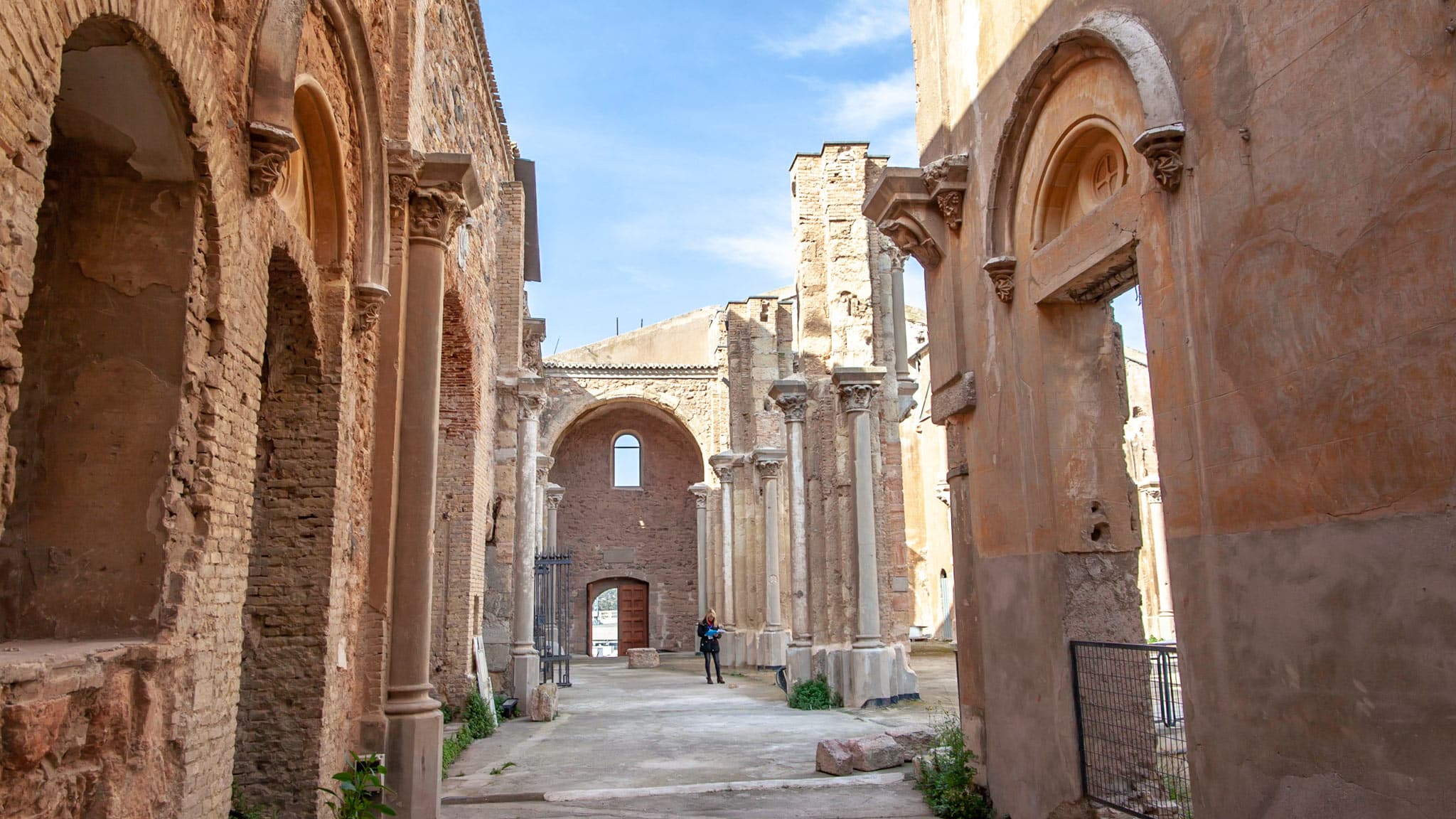
CALL INTO THE CONCEPCIÓN CASTLE
For the best overview of the history of this port city, head to the remains of the Concepción Castle which have now been converted into an interesting museum, while also offering views across the city.
This would be a great stop for kids especially, as there is a mix of exhibits including interactive, video, and just some cool medieval armour outfits on display.
ADMIRE THE ROMAN FORUM
In the heart of Cartagena, so much so it’s moments from the bar scene, is the Roman Forum, one of the most impressive city-centred archaeological sights that Spain has to offer.
It’s incredible that for thousands and thousands of years this was undiscovered, but Cartagena is a city that keeps on giving it seems, with new historic findings being made regularly.


MAKE THE MOST OF THE MUSEUMS ON OFFER
There are plenty more museums and attractions to visit in Cartagena, and the waterfront is a great place to enjoy outside sculptures and statues. You’ll also find the vast National Museum of Underwater Archaeology here, which is fitting thanks to Cartagena’s long maritime history and would be another popular attraction for kids.
The Punic Wall of Cartagena is another interesting site, and the remains of the 3rd-century wall and its crypt are houses in a protective glass building.
The ticket prices for the various museums and attractions can add up, so if you plan to visit more than one then enquire about the multi-museum passes which are on offer from some of the main attractions.
WHERE TO EAT AND DRINK IN CARTAGENA
I really enjoyed the food and drink scene throughout the Murcia region; the local wine Monastrell, and more on the Monastrell wine route, can be found here, it is a very palatable grape and fantastic value. The restaurants and tapas bars are also exceedingly affordable for the quality they offer. I did have a couple of dud meals here, but two places that I really enjoyed were Restaurante Casa Cassciaro, and especially the tapas and service in Bodega la Fuente.
Restaurante La Catedral, which was underneath our apartment, also looked delicious, and although we only popped in for a drink, the slightly higher-ended menu was tempting.
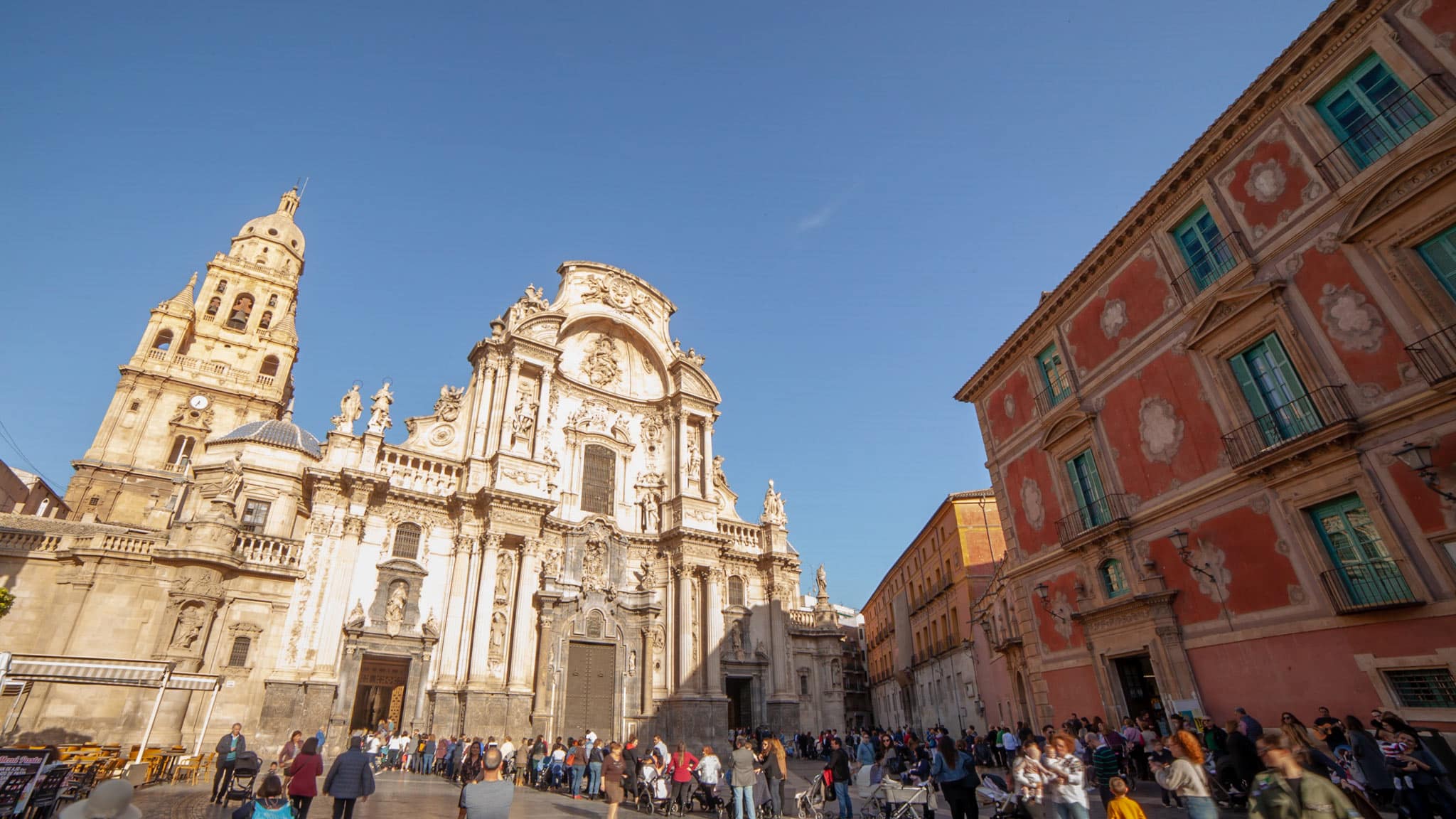
Continue on to the capital city, Murcia
The capital city of the Murcia Region is also called Murcia, an old walled city that offers a laid-back and sophisticated weekend escape, or a great stop on a road trip through the Murcia region.
Two days in the city of Murcia, Spain, should allow you enough time to see the main sights and soak up the Spanish charm of the regions capital city.
Find below my suggestions on what to see, and where to eat and sleep in the city of Murcia.
WHERE TO STAY IN MURCIA CITY, SPAIN
I actually booked two places in Murcia. The first was inside one of the regions famed Orchards where you could actually sleep in a windmill. Sadly, as I was there to produce the video and didn’t have consent to film in that area, we couldn’t sleep there, but you can check it out on Airbnb here, note it is a little bit out of the city centre.
The second spot where we actually stayed was the Catalonia Conde de Floridablanca, a great value 4-star hotel just a few minutes walk from the Cathedral across the bridge.

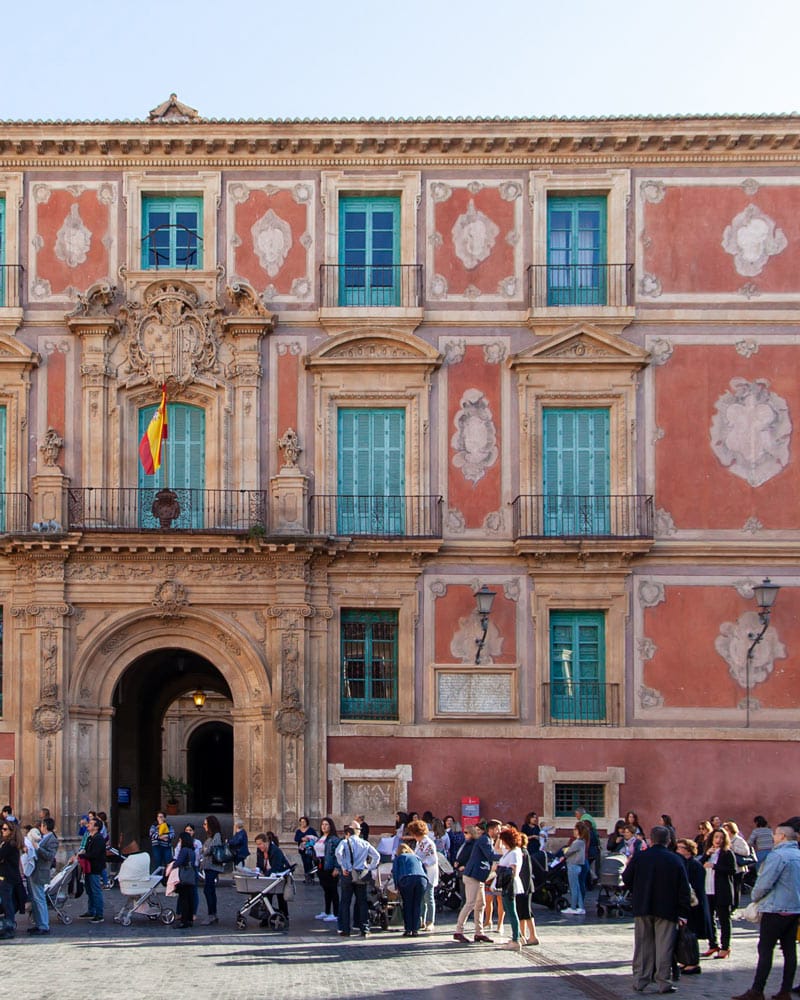
KICK BACK ON CARDINAL BELUGA SQUARE
The main square in Murcia city is flanked by two of the city’s main attractions, so it is a sensible place to begin your trip.
A buzzing spot with cafe terraces spilling out onto the square, grab your first cortado or glass of the wine in the city here to set the pace and enjoy people watching, before venturing out to explore Murcia’s attractions.
EXPLORE THE MURCIA CATHEDRAL AND THE BISHOPS PALACE
Of the two main attractions off the main square, Murcia Cathedral towers above them all.
This beautiful cathedral is dominated by the 92-metre tower which also offers fantastic views over the city, but the real magic is in the range of architecture which makes up the 14th-century building. With Baroque, Renaissance, and Gothic styles mixed here, it really is worth a visit, no matter how many Cathedrals you may have seen in Europe.
Across on the other side of the square is the Episcopal Palace, also known as Bishops Palace, unmissable thanks to the red-washed front of the building. Inside, while many of the rooms are closed off, you can admire the courtyard and large curved staircases.
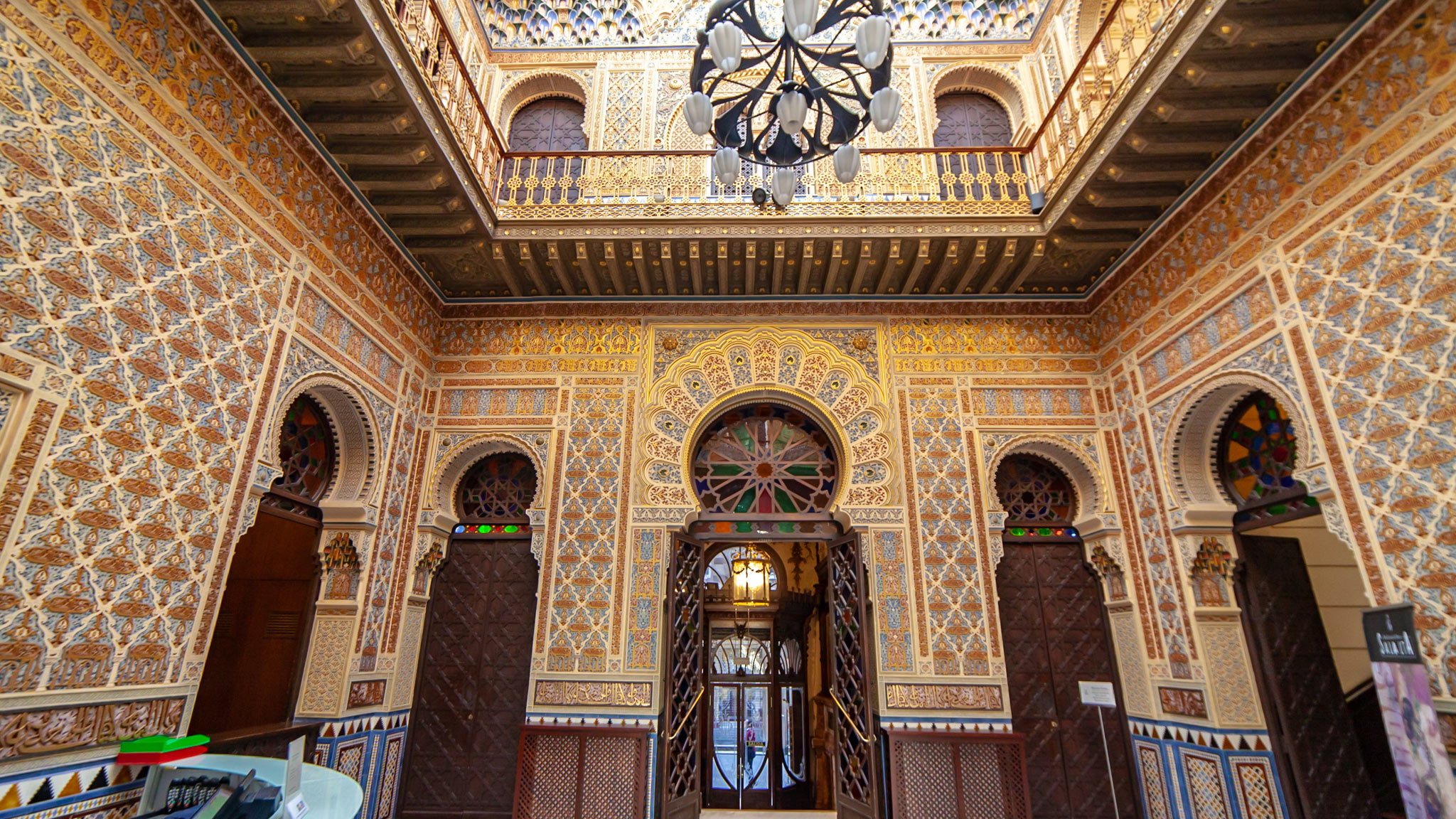
MARVEL AT THE MAGICAL REAL CASINO DE MURCIA
By far my favourite find in the whole Region of Murcia is the Real Casino of Murcia. The building may not seem that special on the outside, but inside there are many impressive rooms to marvel at.
Still working as a members club, although much of it is open to the public, the 1847 casino has been extended over the years, and you can really see the striking influence of the times here. With Islamic tiling in the front hall, to the ornate ceilings in the libraries and ballrooms, honestly if you buy a ticket to anything in the Murcia region, make it here.
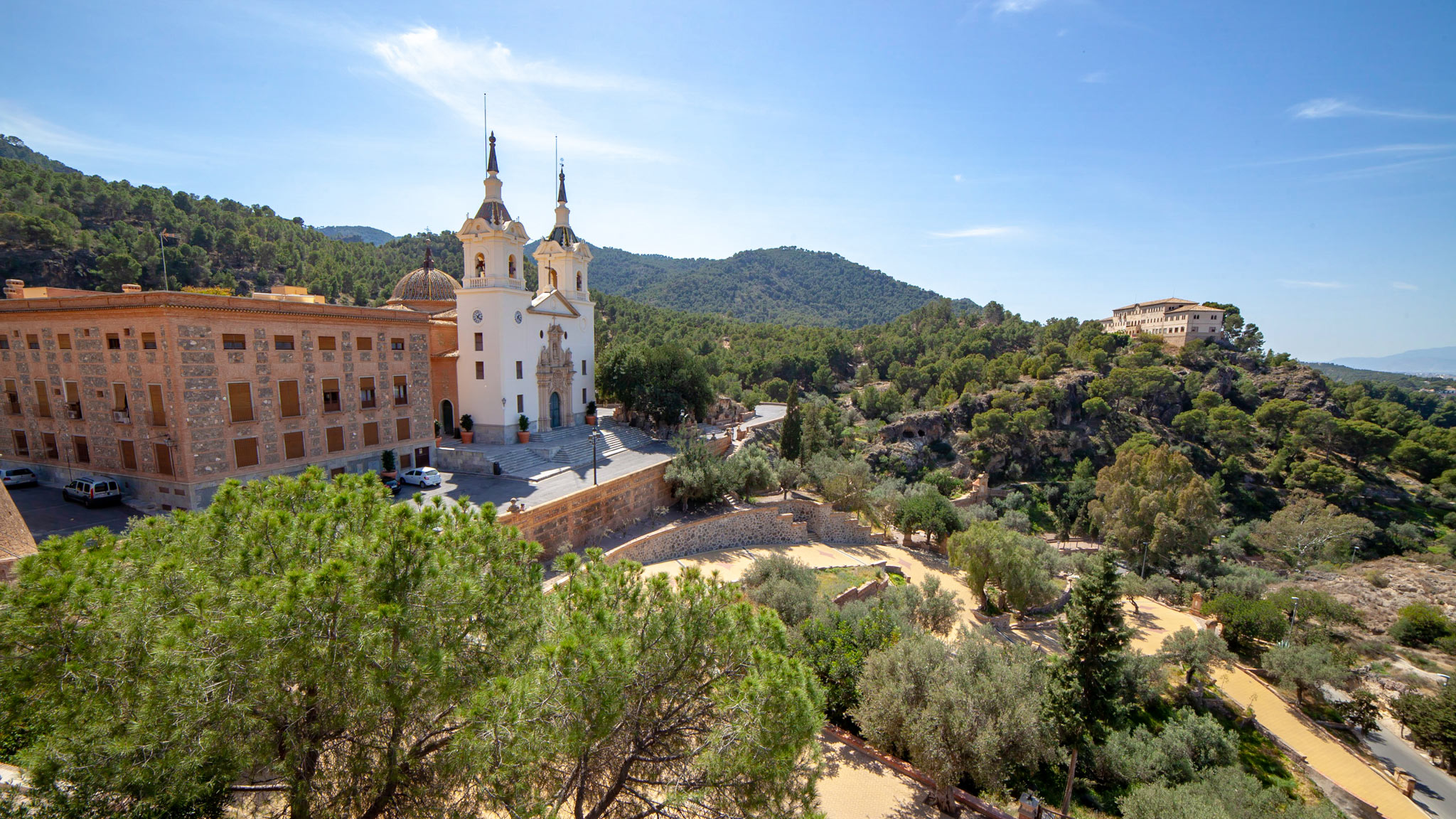
DETOUR TO THE QUITAPESARES TERRACE AND SANCTUARY
In central Murcia, you’ll find the Santa Clara Monastery, which has now been converted in a museum, but another Sanctuary worth visiting is a short drive out of the city, at the Quitapesares Terrace.
Not only do you have some beautiful greenery and views back onto Murcia here, but you can also enjoy a glass of wine and lunch on the terrace before touring the Sanctuary.
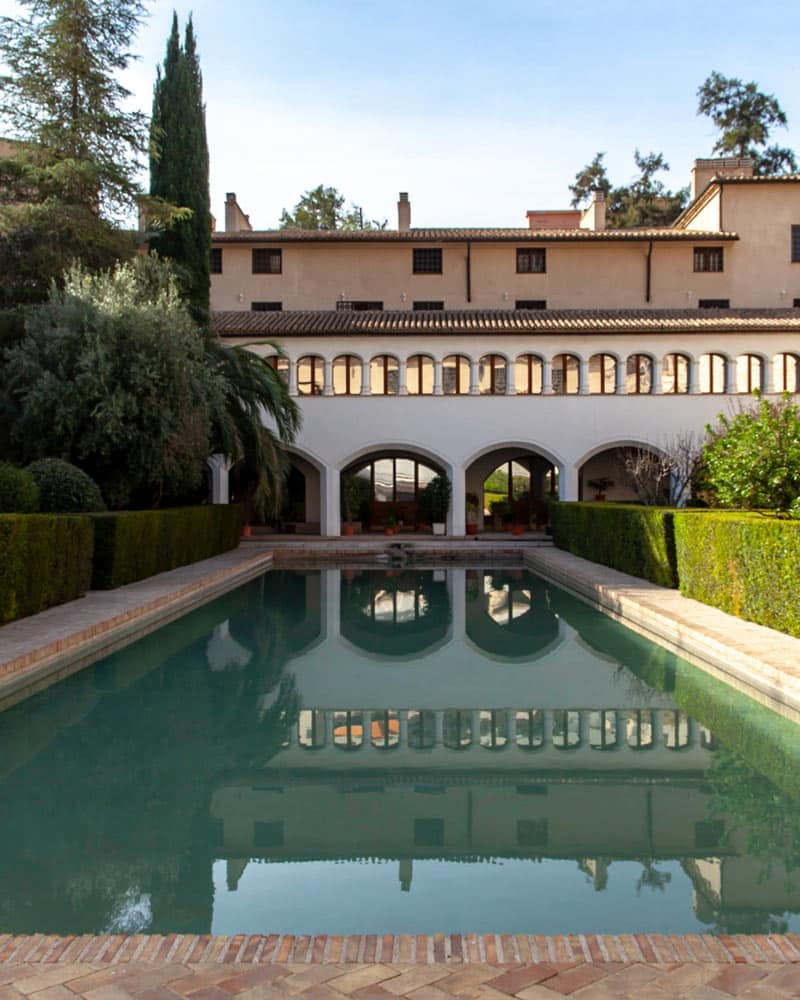

WHERE TO EAT IN MURCIA CITY, SPAIN
The cafe culture and the buzz around Cardinal Square make it the ideal place to relax with a drink, and people watch, but we found most of the best food we ate was down little side streets. My favourite, and offering a more quirky and contemporary inspired menu was El Pasaje de Zabalburu; the wasabi ice cream especially was a surprising hit!
If you want a really fancy meal that you won’t forget, consider actually eating in the Real Casino of Murcia, where the glitzy restaurant has mirrored tables so you can admire the intricate ceiling art even while enjoying your meal.

Land up in Lorca
While there are plenty more places you might want to continue your road trip in Murcia to for the culture, the final stop on our tour was in Lorca, a city steeped in history. Of course, after this, we continued to make a road trip of the Murcia wine route, so I highly recommend that you continue your journey to do that!
Lorca looks very different from much of the Murcia region, due to its varied climate and lack of greenery in the arid area surrounding the city.
WHERE TO STAY IN LORCA
One of the most famous attractions in Lorca is its Castle, and you can actually check in for a night here as part of the Parador accommodation options across Spain.
The accommodation is a modern build, inside the walls of the castle fort, where a spa, pool, restaurant and the best views in the city complete the package.


START AT LORCA CASTLE, FORTRESS AND SYNAGOGUE
The main focal point of the city is the Castle, which stands atop a hill in the centre of the city. The castle and fortress walls enclose the towers, and although not all of it remains, it’s a great attraction for children, especially thanks to the interactive activities.
Underneath the newly built hotel is the old Synagogue of Lorca, again a large part of this is now an archaeological park with limited remains. The Synagogue is in a protected and enclosed room, displaying artefacts and walking you through the history of the Jewish community and quarter here. This is one of the only Synagogues in Spain not converted into a church.
RELAX IN THE MAIN SQUARE AND VISIT SAN PATRICIO
Framed by the towering San Patricio cathedral, colourful cafes, and the ornate Town Hall, the main square of Lorca provides the perfect place to sip on a cortado and people watch.
If you aren’t Cathedralled out yet, visit the San Patricio Cathedral which displays a mix of Baroque and Renaissance, as it was built over a period spanning 300 years.
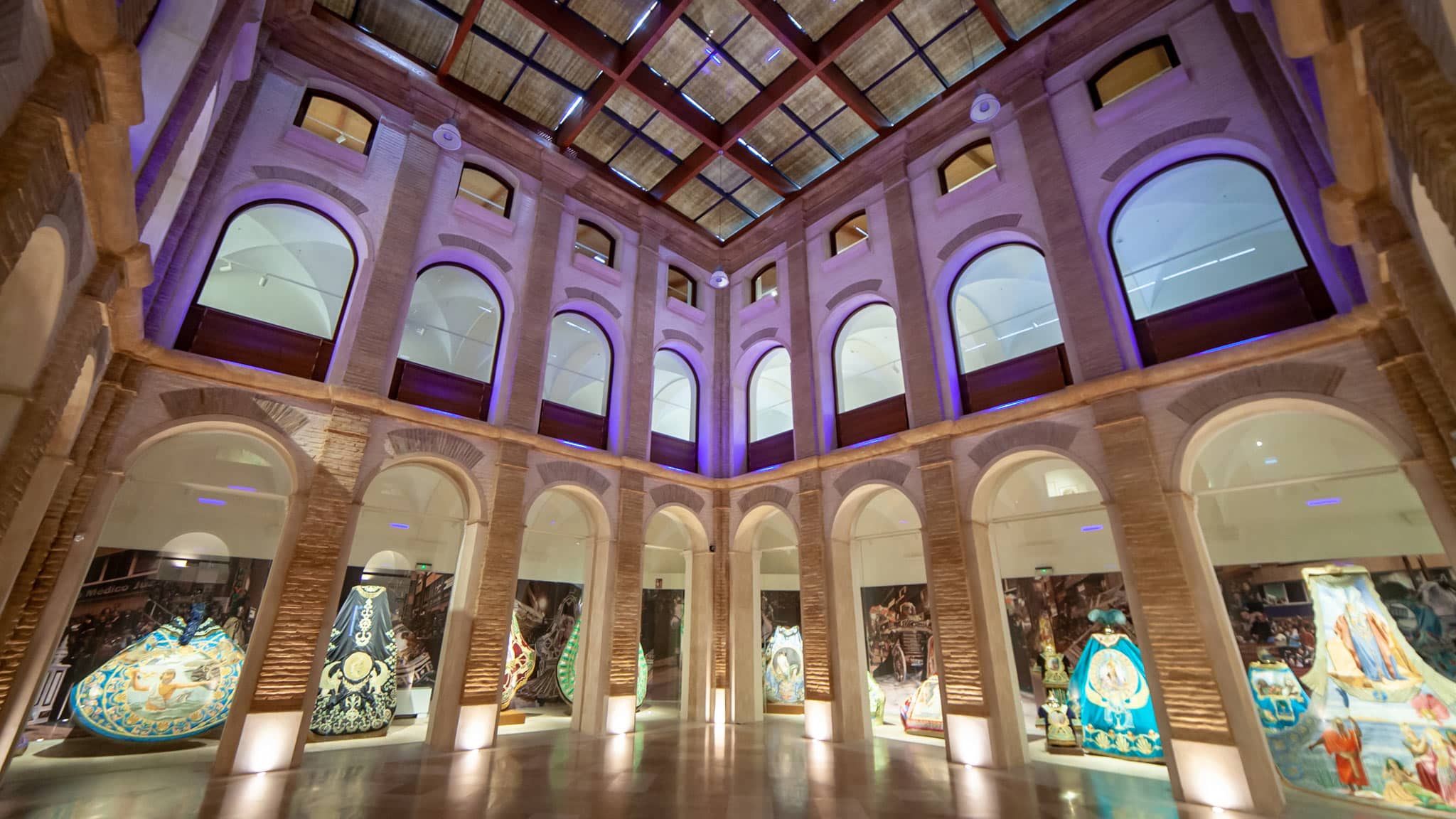
MARVEL AT THE EXTENSIVE HISTORY IN MUSEO ARQUELÓGICO MUNICIPAL
The Via Augusta, an old Roman road, was once the most trafficked route leading along Hispania.
Inside the archaeological Museum here you can start to understand how vast Lorca’s history is, with artefacts, old roman pillars, and plenty more walking you through the timeline of this city, and the many different inhabitants over the years. Incredibly, some of the old roman pillars which greet you on arrival have only recently been found, when a floor unearthed them.
VISIT MUSEUMS DEDICATED TO FABRICS COMPLETE WITH HIDDEN GEMS
Now, usually, when someone recommends a fabric and embroidery museum, let alone two, I would say thank you and then skip it.
As I was here filming for the tourism board though I obliged, and boy am I glad I did.
The first is the Museum of embroidery, housing masterpieces that would set you back a fortune if they were on sale. But the Paso Blanco, better known as the muBBla Museum, also has a stunning secret attached in the form of a striking gold and white chapel. Be sure to ask for the lights to be turned on to see it in all the glory.
The second Museum dedicated to fabrics, and all things Holy Week, is the Paso Azul, the blue easter museum which celebrates Spain’s Semana Santa.
Again attached to a church, this multi-floored museum showcase some of the most elegant Sanat Semana outfits, many made by the locals in Lorca, and takes you through the history of this celebration which occurs over multiple days annually.
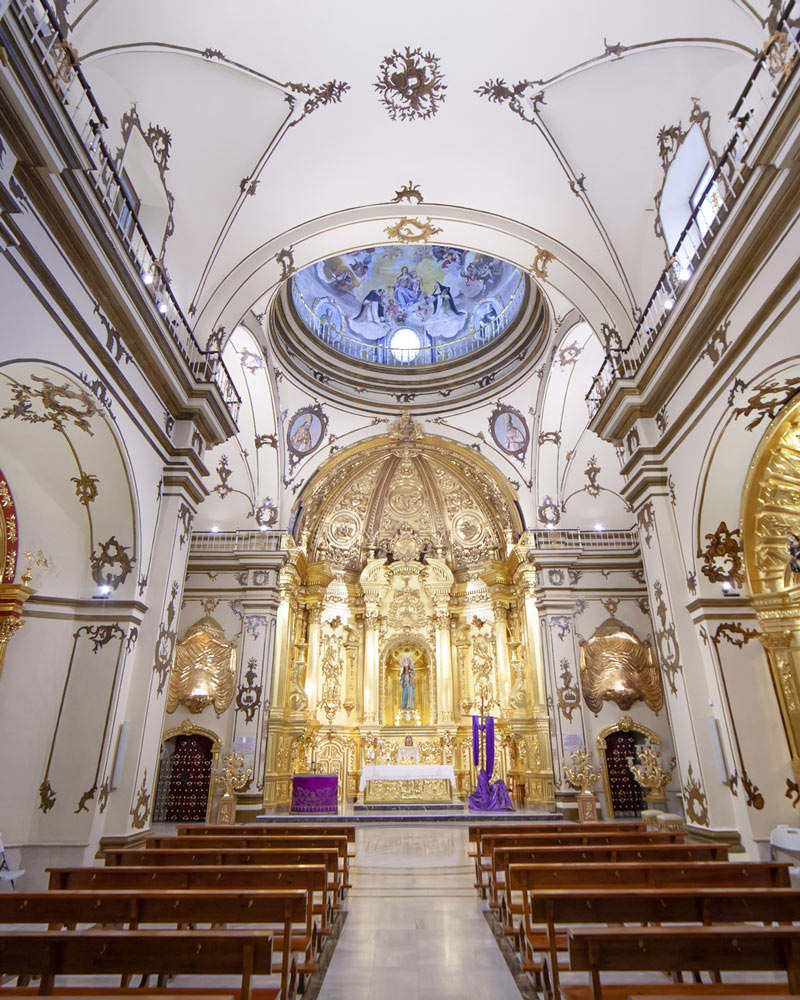

Lorca concluded stage one of our Murcia road trip, but the second per introduced us to the local grape of Monastrell, which led to a full car boot of bottles and a new appreciation for this delicious indigenous grape.
After all that culture, some great value food and wine are well deserved!

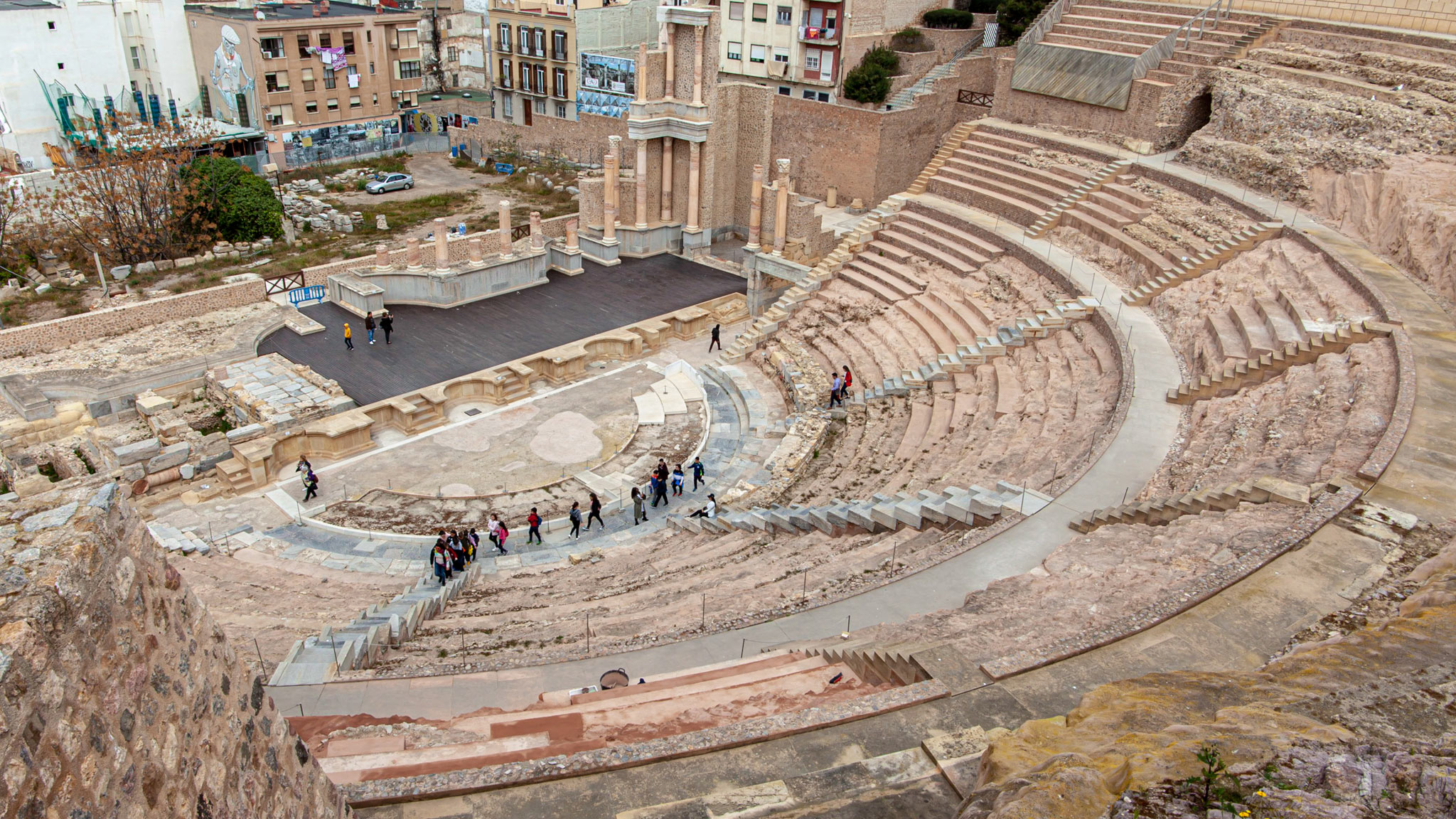



nice place . nice article i want to visit that someday….